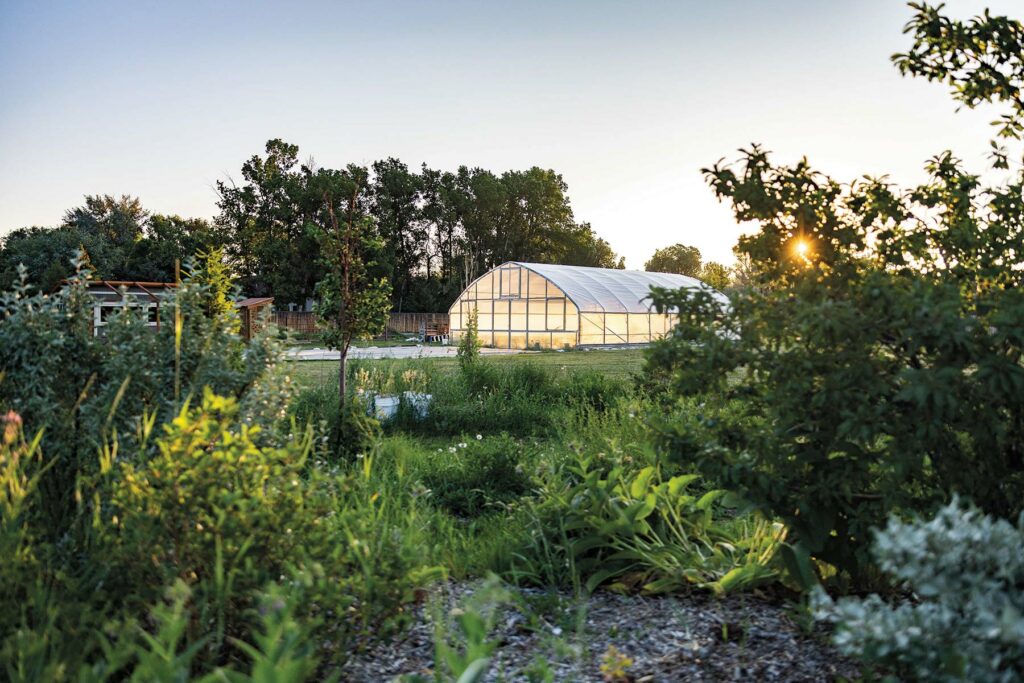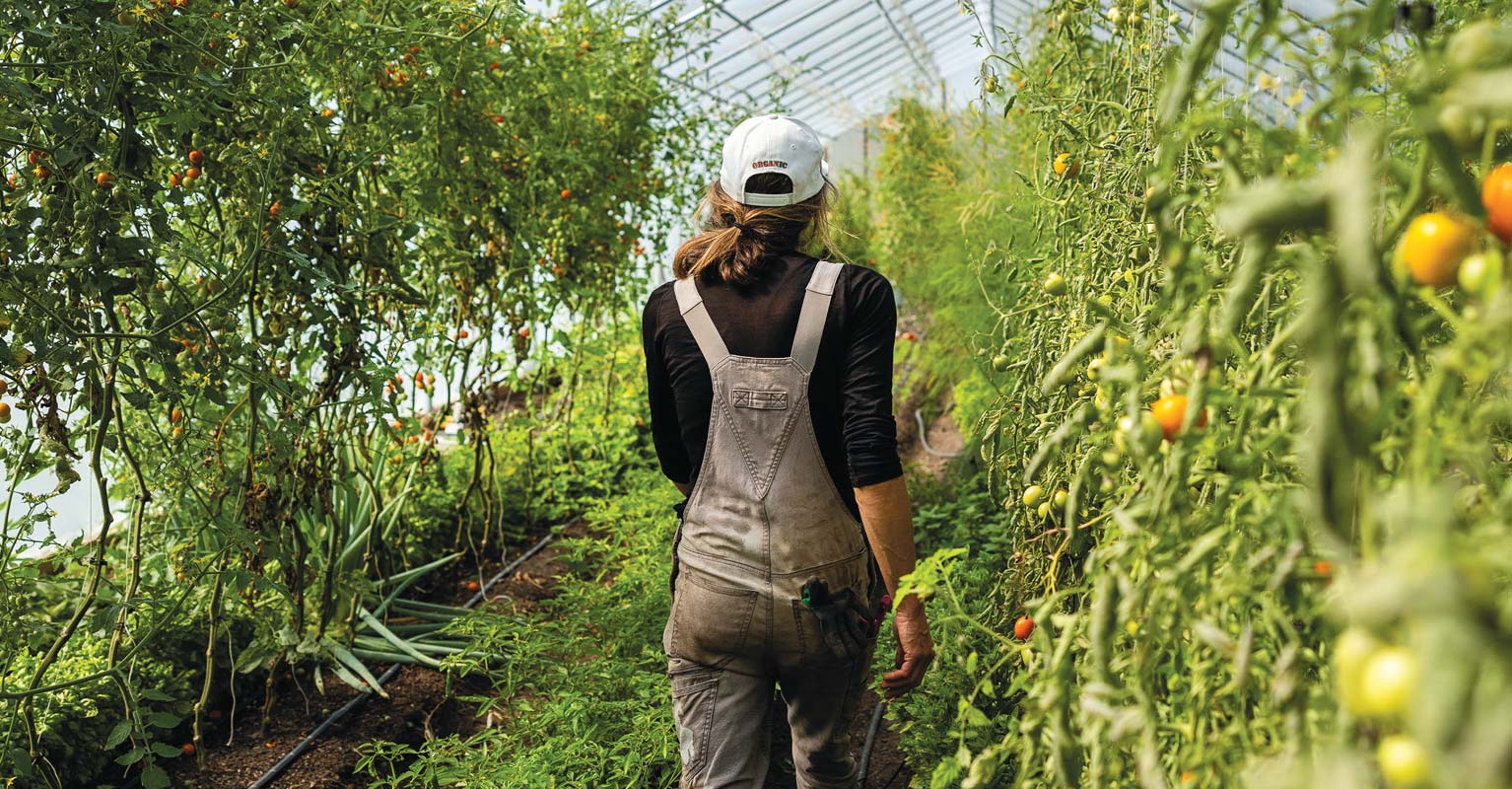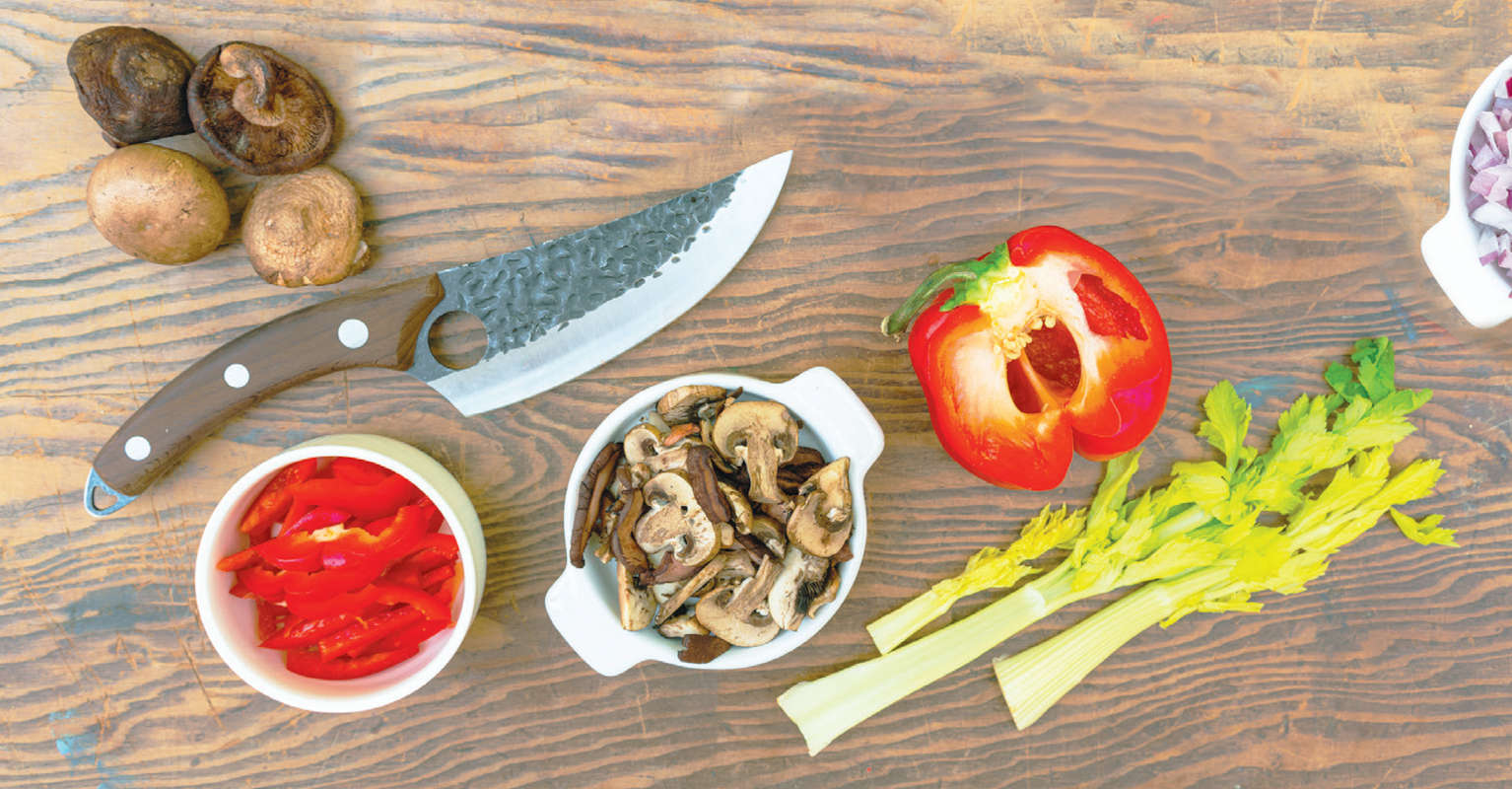Mona Lewis (right), founder of Paradise Permaculture Institute, works closely with board member Angela Devani (left) and others to develop programming around sustainable, edible gardens and landscapes
Livingston’s Paradise Permaculture Institute
Ten years ago, Mona Lewis and her husband, David, sought a property on which to apply the principles of permaculture. Fueled by her hands-on public education background and ignited after watching a permaculture webinar, Lewis had a clear vision: She wanted to use permaculture to grow food and restore the land. The couple corralled a few like-minded friends, and the search began for an ideal demonstration site for what would become the nonprofit Paradise Permaculture Institute.
Sitting just west of U.S. Highway 89 in Livingston, Montana, the 5.7-acre parcel they found was an overgrazed horse pasture—a blank slate in need of restoration. As a former alfalfa-field-turned-pasture, it had bare spots that were dry and cracked, with patches of thistle and dandelion and scattered native grasses. A few narrow-leaf cottonwood and willow trees lined the property’s southwest corner and the driveway, and a patch of evergreens sheltered the north side of the house.
Since then, the property has been transformed. On a late June morning, the volume of vegetation floods the senses. The flowers, shrubs, fruit trees, and berry bushes have flourished from mulching that cooled the soil.
“I think it’s amazing to see the story of the land,” says Meghan McCarthy, a Paradise Permaculture board member who is passionate about growing local food. “When Mona and David first bought the property, it was dead. Now… it’s a thriving place.”
Permaculture means “permanent agriculture.” It’s the development of agricultural ecosystems intended to be sustainable and self-sufficient, guided by the principle of stewarding whatever life occurs on the land. “Permaculture is a very thoughtful way to create balance and harmony, whether it’s a large or small space,” McCarthy says. “Permaculture, to me, is finding that balance in taking and giving back. We are using the land to grow more food. It’s creating diversity.”
This approach to growing food is good for the land and is also important for human communities. According to the Montana Food Bank Network, 30 of Montana’s 56 counties contain areas that are considered food deserts, or communities that have limited access to affordable, healthy food. Hunger is directly related to economic insecurity as our state experiences rising costs of housing, childcare, and medical care. Permaculture can be used as a tool to address this: Urban homes may have small growing spaces that support spinach and pea patches, while more rural properties may develop more sizeable vegetable gardens.
“You can create growing spaces, but it’s not until the amphibians come, that the frogs and snakes are getting more prolific, that you feel you are healing the land.”
—Mona Lewis


While a well-designed and executed permaculture program is good for the land, Lewis recalls how nervous she felt when they first began. Given that the first task required excavation, it felt like they were inflicting further damage to the degraded landscape. Now, she smiles as she remembers her trepidation. Since the property experiences pervasive winds, original board member Zach Weiss first used a backhoe to dig out a crater garden, which creates a microclimate for growing while also providing a windbreak for part of the property. Today’s one-acre crater garden has a 12-foot soil berm that protects the downwind orchard trees, shrubs, and flowers. Since every foot of depth lifts the wind by six feet, their crater garden pushes the wind up 72 feet.
While dredging up the soil, the team uncovered a series of layers with differing amounts of clay. They used that clay to build terraces at a slight angle to catch precipitation. The richest of the clay layers were used for the bottom of a pond to help form a natural seal. They also developed three levels of terrace beds around the pond and included terrace levels within the pond to support aquatic bugs, insects, and frogs. Lewis oversaw the planting of water-loving plants and says, “Within an hour, there were ten iridescent blue-green damsel flies on one strand of water iris. We opened the earth to life again, on so many levels.”
The pond helps moderate scorching summer temperatures. On the north side is another microsite for growing fruit trees that thrive in the reflecting sun. In summer, if algae grows in the water, the team harvests it to feed the trees and shrubs.
Ten years in, and the amphibians are finally coming in. “You can create growing spaces, but it’s not until the amphibians come, that the frogs and snakes are getting more prolific, that you feel you are healing the land,” Lewis says.
The bulk of Paradise Permaculture’s vegetables and greens are grown in an uninsulated rolling high-tunnel greenhouse. This structure can cover one of three separate 30- by 48-foot sections and operates on a linear track. It is moved progressively as plants mature and are ready for full sun exposure, allowing Lewis to grow nearly year-round. Cold-weather greens, like spinach, arugula, and kale, are planted first. Then, when the cold-hardy greens are thriving, Lewis rolls the greenhouse to the next section to expose the greens and protect delicate tomato, cucumber, and basil seedlings.
While Lewis relied on extensive planning to develop the property, she says the principles of permaculture are relatively basic and can be applied to create what is known as a food forest. Referencing British Columbia permaculture expert Richard D. Walker’s book Food Forestry North of the 49th, Lewis says, “He keeps things simple, which is what I like to share with people: It’s doable, and it works.”
The concept of a food forest is not new. These gardens, filled with a diverse selection of edible plants, mimic natural ecosystems, and Indigenous communities have, throughout history, developed and relied on these spaces in many parts of the world. Distinct from a more conventional backyard garden, a food forest is intended to be self-sustaining.
Currently in the last phase of development for the property’s permaculture plan, the Paradise Permaculture team is diverting water from their irrigation canal to create an acre-sized Regenerative Forest. Already, their plantings of birch, poplar, and Swiss stone pine are reaching toward the blue sky. The diverted water will gravity-feed into linear channels called swales. Along the swales, they’ll plant hazelnuts, apples, cherries, plums, and chestnuts, as well as raspberries, currants, Haskap (honeyberry), Jostaberry, and Saskatoon berry. Hardy purple grapes will one day vine up the fruit trees. In between swales, Lewis plans to plant vegetables, some perennials and some annuals.
As the evolution of the property nears completion, the organization is also on its way to being self-sustaining. The bulk of their produce is sold to Livingston’s FoodWorks and Woods Rose Market, as well as Campione, an Italian restaurant co-owned by Lewis’s son-in-law, Jeffrey Galli. Lewis’s daughter, Jenna Galli, is the property’s field hand, and she spends her time weeding and harvesting. Paradise Permaculture also sells plant starts in the spring, such as comfrey and Jerusalem artichoke, as well as berry bushes like raspberries and goji.
In addition to a developed natural landscape, Mona and David have built several structures. One, a washing station for produce, can be used as a classroom space as well as for special events like farm dinners. This summer, the team was in construction on a cordwood composting bathroom, built by volunteers and used as an educational project. It is attached to a small cordwood tool shed and is made from wood from the local forest and a mortar mix developed using soil on site.
In September, Paradise Permaculture celebrated its tenth anniversary with a farm tour and tasting, and will hold additional programs this fall, such as the Wild Weed Harvest Feast on Saturday, October 7.
In the next ten years, Lewis plans to create a children’s garden, a learning center for larger groups, and a 3- by 6-foot sunken geothermal greenhouse with the goal of growing citrus fruits. Certainly, given the past ten years of transformation on the land, the next ten years at the Paradise Permaculture Institute will be thriving.




